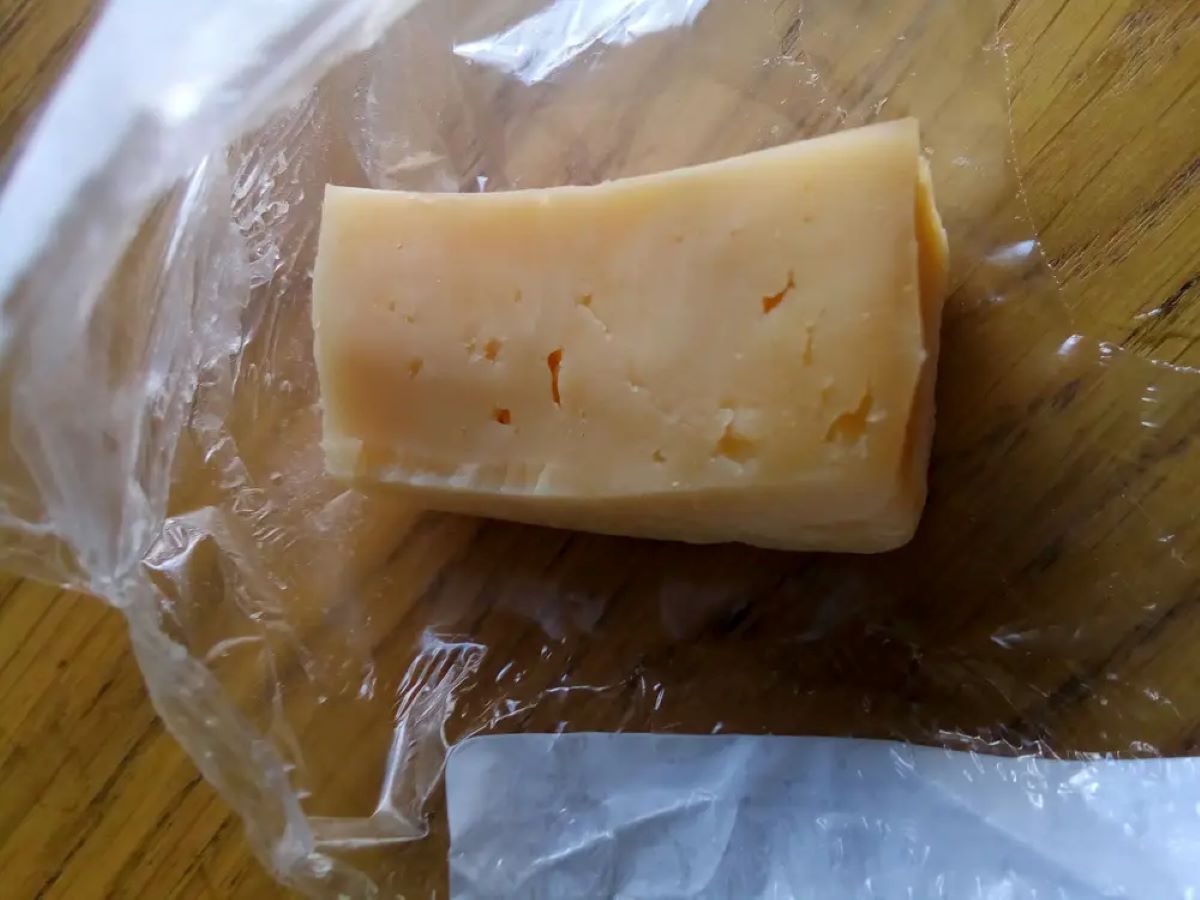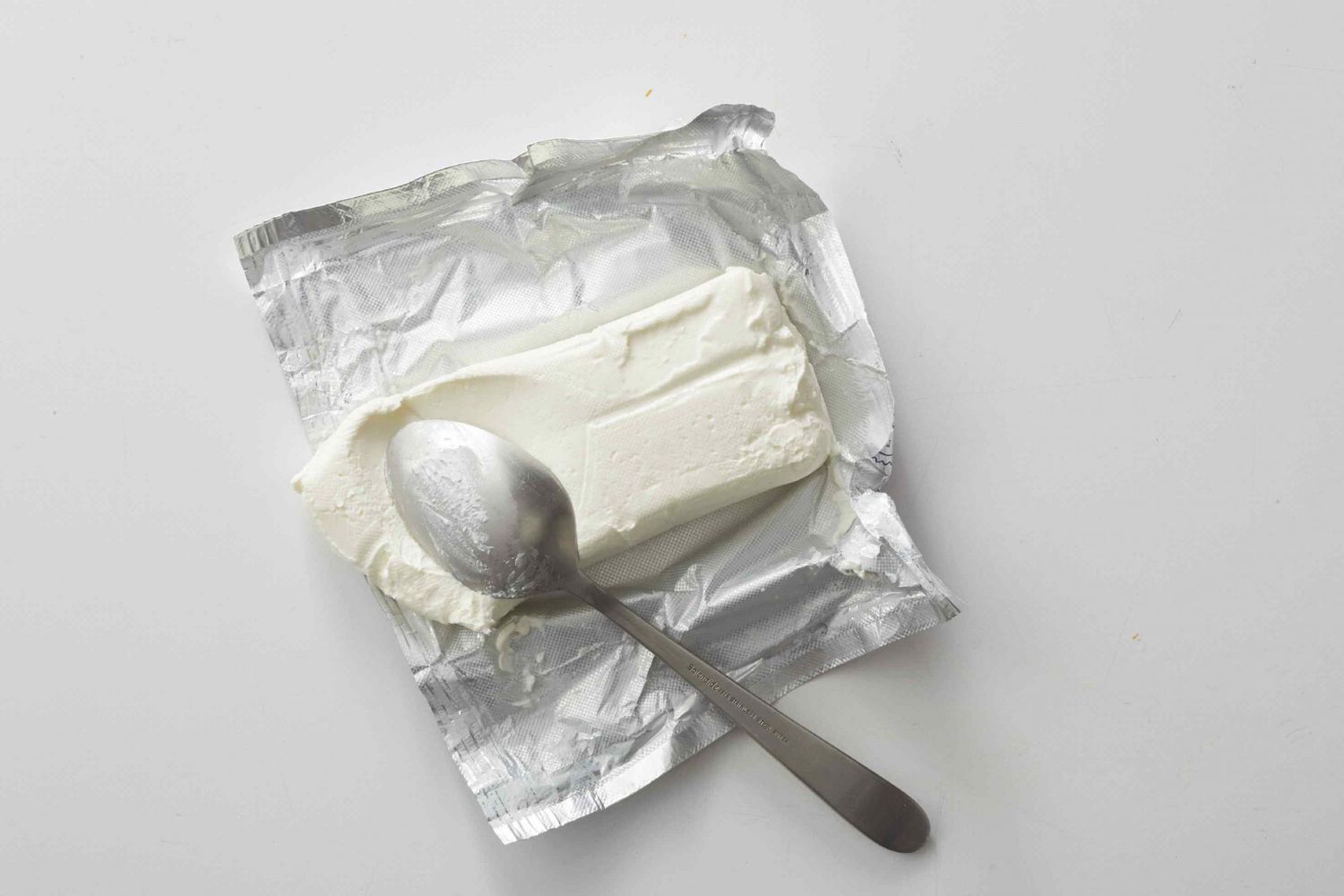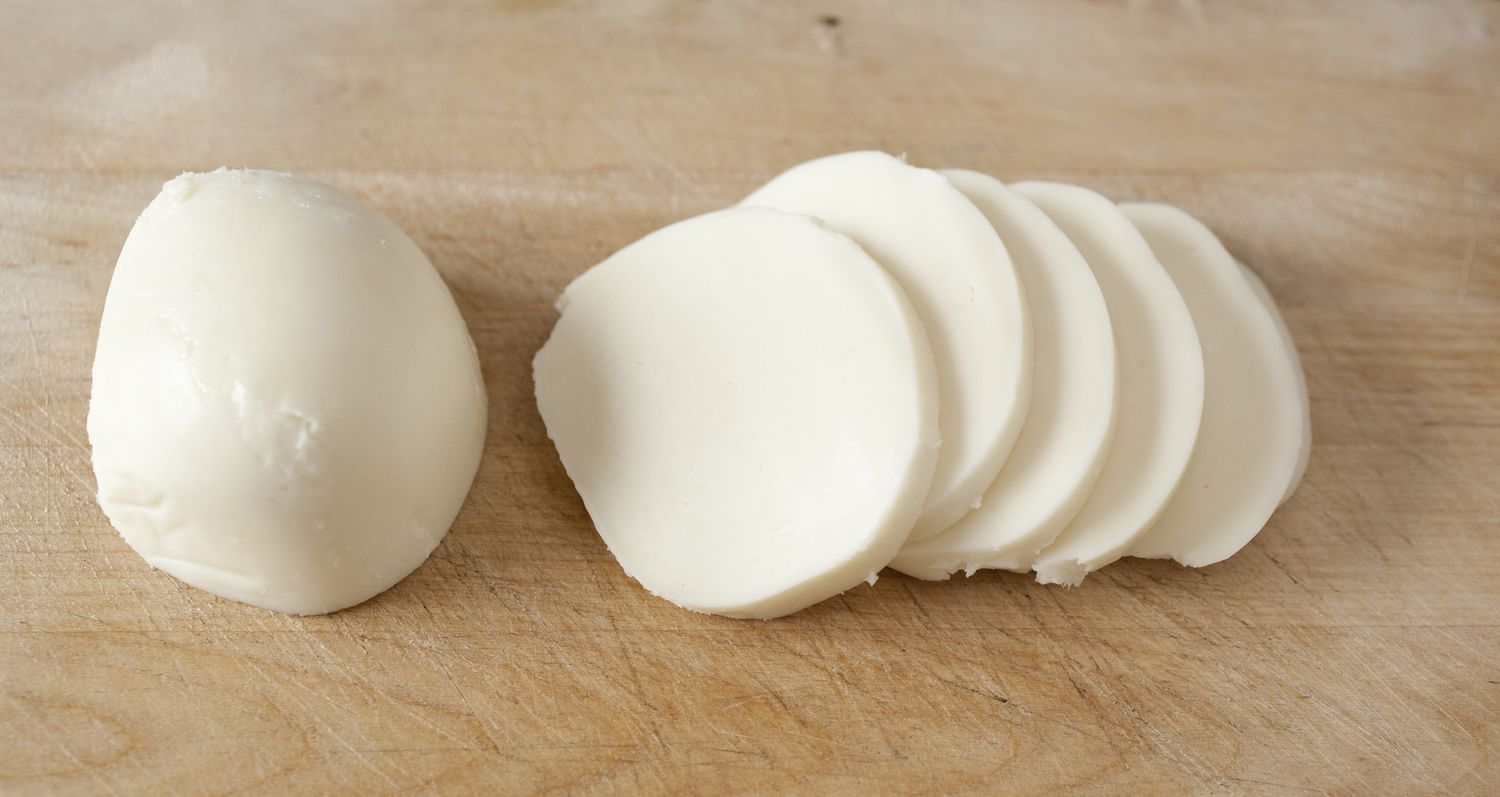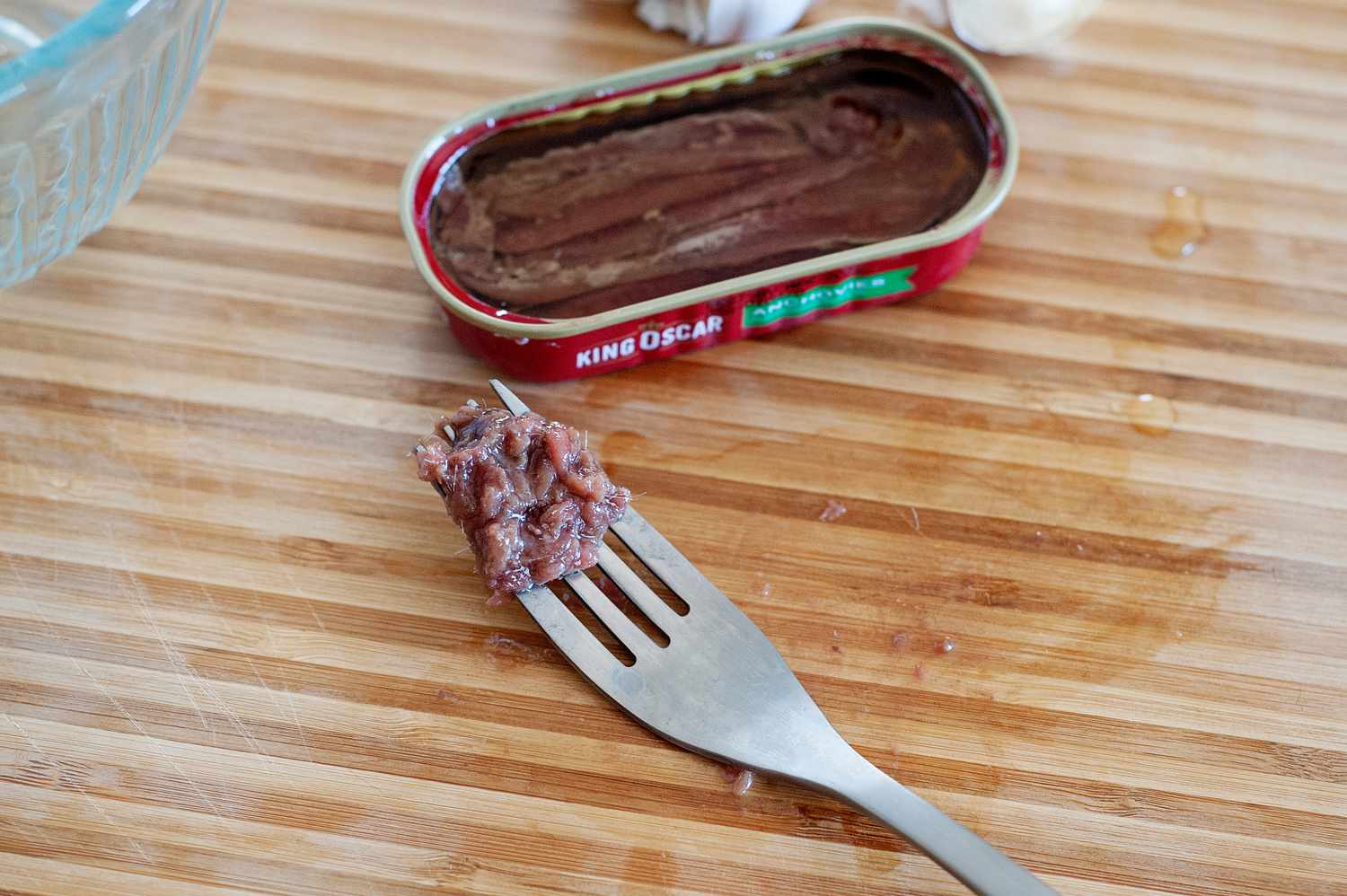

Articles
How To Store Cheddar Cheese After Opening
Modified: December 7, 2023
Discover the best way to store cheddar cheese after opening with our informative articles. Keep your cheese fresh for longer with our expert tips.
(Many of the links in this article redirect to a specific reviewed product. Your purchase of these products through affiliate links helps to generate commission for Storables.com, at no extra cost. Learn more)
Introduction
Cheddar cheese is a beloved staple in many households. Its rich and creamy flavor makes it a versatile ingredient in various dishes, from macaroni and cheese to grilled sandwiches. However, once you’ve opened a block of cheddar cheese, proper storage becomes crucial to maintain its freshness and flavor.
In this article, we will explore the importance of storing cheddar cheese correctly and the factors that can affect its storage. We will also provide you with a step-by-step guide on how to store cheddar cheese after opening, including different options for wrapping or packaging. Additionally, we will share some tips to help you maintain the quality and flavor of your cheddar cheese for as long as possible.
By understanding the best practices for cheddar cheese storage, you can prevent your cheese from drying out, becoming moldy, or losing its delicious taste. Whether you’re a cheese enthusiast or just enjoy a slice of cheddar on your sandwich, learning how to store your cheese properly is essential.
So let’s dive in and discover the secrets to keeping your cheddar cheese fresh and delicious long after its initial opening!
Key Takeaways:
- Properly storing cheddar cheese is essential to maintain its moisture, prevent mold growth, and preserve its unique flavor. Factors like temperature, humidity, and airflow play a crucial role in cheese storage.
- Whether you opt for wax paper, cheese paper, vacuum sealing, a cheese container, or freezing, there are various effective methods to store cheddar cheese. Following simple tips can help maintain its quality and flavor for an extended period.
Read more: How To Store Mozzarella Cheese After Opening
Why Storing Cheddar Cheese Properly is Important
Properly storing cheddar cheese is essential to maintain its quality, flavor, and texture. Here are a few reasons why it is important:
- Preventing moisture loss: Cheddar cheese contains a significant amount of moisture, and if not stored correctly, it can dry out quickly. Improper storage can lead to a loss of moisture, resulting in a dry and crumbly texture.
- Avoiding mold growth: Cheddar cheese is susceptible to mold growth, especially when exposed to air. Proper storage can help minimize the chances of mold formation, preserving the cheese’s freshness and preventing it from becoming inedible.
- Maintaining flavor and aroma: Cheddar cheese develops its unique flavor and aroma over time. By storing it properly, you can help retain these distinct characteristics, allowing you to enjoy the full richness of your cheese.
- Extending shelf life: Storing cheddar cheese correctly can prolong its shelf life. This means you can savor your cheese for longer periods, reducing waste and saving money.
Overall, proper storage ensures that your cheddar cheese remains fresh, flavorful, and safe to consume. Now that we understand the importance of storing cheddar cheese correctly, let’s explore the various factors that can affect cheese storage.
Factors Affecting Cheese Storage
When it comes to cheese storage, certain factors can significantly impact the quality and longevity of your cheddar cheese. Being aware of these factors can help you make informed decisions about how to store your cheese effectively. Here are the key factors to consider:
- Temperature: Cheese is sensitive to temperature fluctuations. Ideally, cheddar cheese should be stored at a consistent temperature between 35°F and 45°F (1.7°C and 7.2°C). Avoid storing cheese in the refrigerator door where temperatures can vary.
- Humidity: Cheese requires a moderate level of humidity to prevent drying out. Aim for a humidity level of around 80-90%. Too much moisture can promote the growth of mold, while too little can cause the cheese to become dry and lose its flavor.
- Airflow: Cheese needs proper airflow to prevent the growth of unwanted bacteria. However, excessive airflow can cause the cheese to dry out. It’s important to strike a balance by ensuring proper ventilation without subjecting the cheese to too much air exposure.
- Light exposure: Cheese should be stored in a dark place or wrapped in opaque material to protect it from light exposure. Ultraviolet light can negatively affect the cheese’s flavor and texture, leading to a less enjoyable eating experience.
- Odor absorption: Cheese has a tendency to absorb odors from its surroundings, which can alter its taste. Avoid storing cheese near strong-smelling foods to prevent flavor contamination.
By considering these factors and tailoring your storage methods accordingly, you can help preserve the flavor, texture, and overall quality of your cheddar cheese. Now that we understand the factors that influence cheese storage, let’s explore the step-by-step guide to storing cheddar cheese after opening.
Step-by-Step Guide to Storing Cheddar Cheese After Opening
Properly storing cheddar cheese after opening is crucial for maintaining its freshness and flavor. Follow this step-by-step guide to ensure your cheese stays in optimal condition:
- Inspect the cheese: Before storing, examine the cheese to ensure there are no signs of mold or spoilage. If you notice any mold, trim off the affected area before proceeding.
- Wrap in wax paper: Start by wrapping the cheddar cheese in wax paper. This breathable material helps regulate humidity and prevents the cheese from drying out. Make sure to tightly wrap the cheese, covering all exposed surfaces.
- Place in a resealable bag: After wrapping the cheddar cheese in wax paper, transfer it to a resealable plastic bag. Squeeze out any excess air before sealing the bag. This step helps further protect the cheese from moisture loss and potential contamination.
- Find the right storage location: Store the wrapped cheddar cheese in the refrigerator. Choose a spot that maintains a consistent temperature, such as the bottom vegetable or cheese drawer. Avoid storing the cheese near foods with strong odors to prevent flavor transfer.
- Monitor regularly: Periodically check the cheese for any signs of mold or spoilage. If you notice any changes in the cheese’s appearance or smell, it may indicate that it’s time to consume or discard the cheese.
This simple step-by-step guide ensures that your cheddar cheese is protected from moisture loss, mold growth, and flavor contamination. However, if you prefer alternative storage methods, continue reading to explore additional options.
Option 1: Wrapping in Wax Paper
Wrapping cheddar cheese in wax paper is a classic and effective method for storing it after opening. Here’s how to do it:
- Prepare the wax paper: Cut a piece of wax paper large enough to fully wrap the cheddar cheese.
- Wrap the cheese: Place the cheddar cheese in the center of the wax paper. Fold the sides of the paper over the cheese and tuck them underneath. Then, fold the top and bottom edges of the paper to complete the wrap.
- Secure the wrap: Use tape or a twist tie to secure the wax paper wrap in place, ensuring it remains tightly sealed.
- Label the cheese: Write the date and type of cheese on the outside of the wax paper, so you can easily identify it later.
- Store in the refrigerator: Transfer the wrapped cheese to a resealable bag or an airtight container to protect it from moisture and odors. Place it in a cool area, such as the bottom vegetable or cheese drawer in your refrigerator.
Wrapping cheddar cheese in wax paper helps maintain its moisture balance while allowing it to breathe and prevent excessive mold growth. Remember to check the cheese regularly for any signs of spoilage and enjoy it within a reasonable timeframe to ensure optimal taste and quality.
Now that you’ve learned about wrapping cheddar cheese in wax paper, let’s explore another option for storing your cheese – using cheese paper or parchment paper.
Read more: How To Store Brie Cheese After Opening
Option 2: Using Cheese Paper or Parchment Paper
Another popular option for storing cheddar cheese after opening is to use cheese paper or parchment paper. Here’s how to properly store your cheese using this method:
- Obtain cheese or parchment paper: Purchase specialized cheese paper, which is designed to regulate moisture and prevent mold growth. Alternatively, you can use parchment paper as a substitute.
- Wrap the cheese: Cut a piece of cheese or parchment paper large enough to fully wrap the cheddar cheese. Place the cheese in the center of the paper and fold the sides over it. Secure the edges by folding or tucking them under the cheese.
- Label the cheese: Using a marker or pen, write the date and type of cheese on the outside of the paper. This will help you keep track of the cheese and its expiration date.
- Store in the refrigerator: Place the wrapped cheese in a resealable bag or an airtight container to provide further protection from moisture and odors. Store it in the refrigerator, preferably in the vegetable or cheese drawer.
Using cheese or parchment paper creates a breathable yet protective barrier around the cheddar cheese, helping to maintain its moisture balance and prevent mold growth. Remember to periodically check the cheese for any signs of spoilage and consume it within a reasonable timeframe for the best taste and quality.
Now that you know how to store cheddar cheese using paper wraps, let’s explore another option that helps remove excess air from the packaging – vacuum sealing.
Store cheddar cheese after opening by wrapping it in wax paper or parchment paper, then placing it in an airtight container or resealable plastic bag. Keep it in the coldest part of the fridge to maintain freshness.
Option 3: Vacuum Sealing
Vacuum sealing is a great option for storing cheddar cheese after opening, as it helps remove excess air from the packaging, extending the cheese’s shelf life. Here’s a step-by-step guide to vacuum sealing your cheddar cheese:
- Cut the cheese into smaller portions: If you have a large block of cheddar cheese, consider slicing it into smaller portions. This will allow you to vacuum seal only the amount you intend to use at a given time.
- Place the cheese in a vacuum-seal bag: Insert the cheddar cheese portion into a vacuum-seal bag. Ensure that it is placed in the center of the bag and that there is enough space remaining at the top for sealing.
- Seal the bag: Follow the instructions provided with your vacuum sealer to seal the bag. Different models may have varying methods, such as using heat or applying pressure to create an airtight seal.
- Label the bag: Use a marker or label to indicate the date and type of cheese on the outside of the vacuum-sealed bag. This will help you keep track of the cheese and ensure that you use it within a reasonable timeframe.
- Store in the refrigerator: Place the vacuum-sealed bag of cheddar cheese in the refrigerator, preferably in the vegetable or cheese drawer. The vacuum-sealed packaging will help protect the cheese from moisture, mold, and odor absorption.
Vacuum sealing cheddar cheese helps preserve its freshness by removing excess air from the packaging. This method can extend the shelf life of your cheese, allowing you to enjoy it over an extended period without compromising its quality.
Remember to check the vacuum-sealed cheese periodically for any signs of spoilage and consume it within a reasonable timeframe for the best taste and quality.
Now that you’re familiar with vacuum sealing cheddar cheese, let’s explore another option – storing it in a cheese container.
Option 4: Storing in a Cheese Container
Storing cheddar cheese in a specialized cheese container is a convenient option that helps maintain its freshness and flavor. Here’s how to store your cheddar cheese using a cheese container:
- Select a cheese container: Look for a cheese container specifically designed for storing cheese. These containers are typically made of plastic or glass and have features like breathable lids or compartments for better cheese storage.
- Prepare the cheese: If necessary, cut the cheddar cheese into smaller portions that can fit in the container.
- Wrap or leave unwrapped: Depending on the type of cheese container you have, you may choose to wrap the cheddar cheese in wax or parchment paper before placing it in the container. Alternatively, some containers have built-in compartments or breathable lids that can keep the cheese fresh without additional wrapping.
- Place the cheese in the container: Put the cheddar cheese into the cheese container, ensuring it fits properly without being crushed or overcrowded.
- Seal the container: Secure the lid of the cheese container tightly to create an airtight seal, preventing moisture loss and limiting exposure to unwanted odors.
- Store in the refrigerator: Place the sealed cheese container in the refrigerator, preferably in the vegetable or cheese drawer. This will help maintain a consistent temperature and provide the ideal storage environment for your cheddar cheese.
Storing cheddar cheese in a dedicated cheese container can help regulate moisture and prevent the growth of mold, ensuring that your cheese stays fresh for longer. Remember to check the cheese periodically for any signs of spoilage and consume it within a reasonable timeframe to enjoy its best taste and texture.
Now that you’ve learned about storing cheddar cheese in a cheese container, let’s explore another option – freezing cheddar cheese.
Option 5: Freezing Cheddar Cheese
Freezing cheddar cheese is a viable option if you have a surplus or want to extend its shelf life. While freezing can affect the texture slightly, it is still a convenient method to preserve the cheese’s flavor. Here’s how to freeze cheddar cheese properly:
- Prepare the cheese: If you have a large block of cheddar cheese, consider cutting it into smaller portions that are easier to thaw and use individually.
- Wrap the cheese: Individually wrap each portion of cheddar cheese tightly in plastic wrap or aluminum foil. Make sure to wrap it completely to prevent freezer burn and protect against odors.
- Label and date: Use a marker or label to indicate the date and type of cheese on each wrapped portion. This will help you keep track of the cheese in the freezer.
- Place in a freezer bag or airtight container: Transfer the wrapped portions of cheddar cheese into a freezer bag or an airtight container. This will provide an extra layer of protection against freezer burn and maintain the cheese’s quality.
- Remove excess air: Squeeze out as much air as possible from the bag or container before sealing. Minimizing air exposure helps maintain the cheese’s texture and prevent freezer burn.
- Store in the freezer: Place the sealed freezer bag or container in the freezer, preferably in a location where it won’t be subject to extreme temperature fluctuations.
Cheddar cheese can be frozen for up to 4 to 6 months while retaining its taste and quality. When you’re ready to use the frozen cheese, simply thaw it in the refrigerator overnight. Avoid thawing at room temperature to prevent bacterial growth.
Keep in mind that the texture of cheddar cheese may change slightly after freezing, becoming crumblier. It is best to use frozen cheddar cheese in cooked dishes such as casseroles, melted on top of soups, or grated for sandwiches.
Now that you’re familiar with freezing cheddar cheese, you have several options to choose from when it comes to storing your cheddar cheese after opening. Choose the method that suits your needs and enjoy your cheddar cheese for an extended period!
Read more: How To Store Velveeta After Opening
Tips for Maintaining Cheese Quality and Flavor
To ensure your cheddar cheese stays fresh and flavorful for as long as possible, follow these tips for maintaining its quality:
- Store at the right temperature: Keep your cheddar cheese stored at a consistent temperature between 35°F and 45°F (1.7°C and 7.2°C). Avoid storing it in the refrigerator door, as temperatures can fluctuate.
- Avoid moisture: Moisture can lead to spoilage and mold growth. Keep your cheese dry by avoiding condensation and moisture in the storage container or wrapping.
- Use proper wrapping materials: Choose wax paper, cheese paper, or parchment paper for wrapping your cheddar cheese. These materials allow the cheese to breathe while protecting it from moisture and odors.
- Prevent odor absorption: Cheese easily absorbs odors from its surroundings. Store your cheddar cheese away from strong-smelling foods to prevent flavor contamination.
- Consume within optimal timeframe: Although cheddar cheese has a longer shelf life compared to some other cheeses, it is best enjoyed within a reasonable timeframe for optimal flavor and texture.
- Handle with clean hands: Always handle cheese with clean hands or utensils to prevent introducing bacteria that could lead to spoilage.
- Keep cheese covered: After each use, rewrap cheddar cheese tightly to prevent air exposure and drying out.
- Rotate your cheese stock: If you have multiple blocks of cheddar cheese, rotate through them, using the oldest ones first to ensure you enjoy your cheese at its freshest.
- Avoid direct light: Store cheddar cheese in a dark place or use opaque wrapping to protect it from light exposure, which can affect its flavor and texture.
- Label and date your cheese: Keep a record of the type and age of your cheddar cheese to easily manage and consume it before it loses its peak flavor.
By following these tips, you can help maintain the quality, flavor, and freshness of your cheddar cheese for an extended period. Remember, cheddar cheese is a versatile ingredient that can enhance a variety of dishes, so keeping it in good condition ensures you can enjoy its delightful taste whenever you desire.
Now that you’re armed with these tips, you’re ready to store and savor your cheddar cheese with confidence!
Frequently Asked Questions (FAQs)
Here are some commonly asked questions about storing cheddar cheese and their answers:
- Can you freeze cheddar cheese?
- How long can you store cheddar cheese after opening?
- Can you store cheddar cheese at room temperature?
- What is the best way to wrap cheddar cheese?
- How do you know if cheddar cheese has gone bad?
- Can you eat moldy cheddar cheese?
Yes, cheddar cheese can be frozen to extend its shelf life. However, freezing may slightly alter its texture, making it crumblier. It is best to use frozen cheddar cheese in cooked dishes.
After opening, cheddar cheese can be stored in the refrigerator for up to 2 to 4 weeks, depending on the quality and storage conditions.
Cheddar cheese is best stored in the refrigerator to maintain its quality and prevent bacterial growth. While it can be left at room temperature for short periods, it is not recommended for long-term storage.
Wrapping cheddar cheese in wax paper, cheese paper, or parchment paper is recommended. These materials allow the cheese to breathe while protecting it from moisture and odors.
Signs that cheddar cheese has gone bad include mold growth, an off odor, slimy texture, or an unpleasant taste. If you notice any of these signs, it is best to discard the cheese.
No, it is not safe to eat moldy cheddar cheese. Mold can produce toxins that are harmful to health. If you spot mold on the cheese, it is recommended to discard the affected portion.
These answers should provide you with a better understanding of how to store and handle cheddar cheese to ensure its freshness and safety.
If you have any other questions or concerns, it is always best to refer to specific storage guidelines or consult a cheese expert for further advice.
Now that we’ve covered some FAQs, let’s conclude our article.
Conclusion
Properly storing cheddar cheese after opening is crucial to maintain its freshness, flavor, and quality. By considering factors such as temperature, humidity, airflow, light exposure, and odor absorption, you can create an optimal storage environment for your cheese.
Whether you choose to wrap your cheddar cheese in wax paper, cheese paper, or parchment paper, vacuum seal it, store it in a cheese container, or freeze it, each method has its benefits and considerations. It is essential to choose the storage option that suits your needs and preferences.
Additionally, following tips such as storing at the right temperature, avoiding moisture, handling with clean hands, and labeling and dating your cheese will help maintain its quality and flavor.
Remember to regularly check your cheddar cheese for any signs of spoilage and consume it within a reasonable timeframe to ensure the best taste and texture.
Whether you’re a cheese lover or a casual cheese consumer, knowing how to store cheddar cheese properly will allow you to enjoy its deliciousness for longer periods without compromising its quality.
So, get ready to savor the creamy and flavorful goodness of your cheddar cheese by implementing the storage techniques and tips shared in this article. Happy cheese storing and indulging!
Frequently Asked Questions about How To Store Cheddar Cheese After Opening
Was this page helpful?
At Storables.com, we guarantee accurate and reliable information. Our content, validated by Expert Board Contributors, is crafted following stringent Editorial Policies. We're committed to providing you with well-researched, expert-backed insights for all your informational needs.














0 thoughts on “How To Store Cheddar Cheese After Opening”